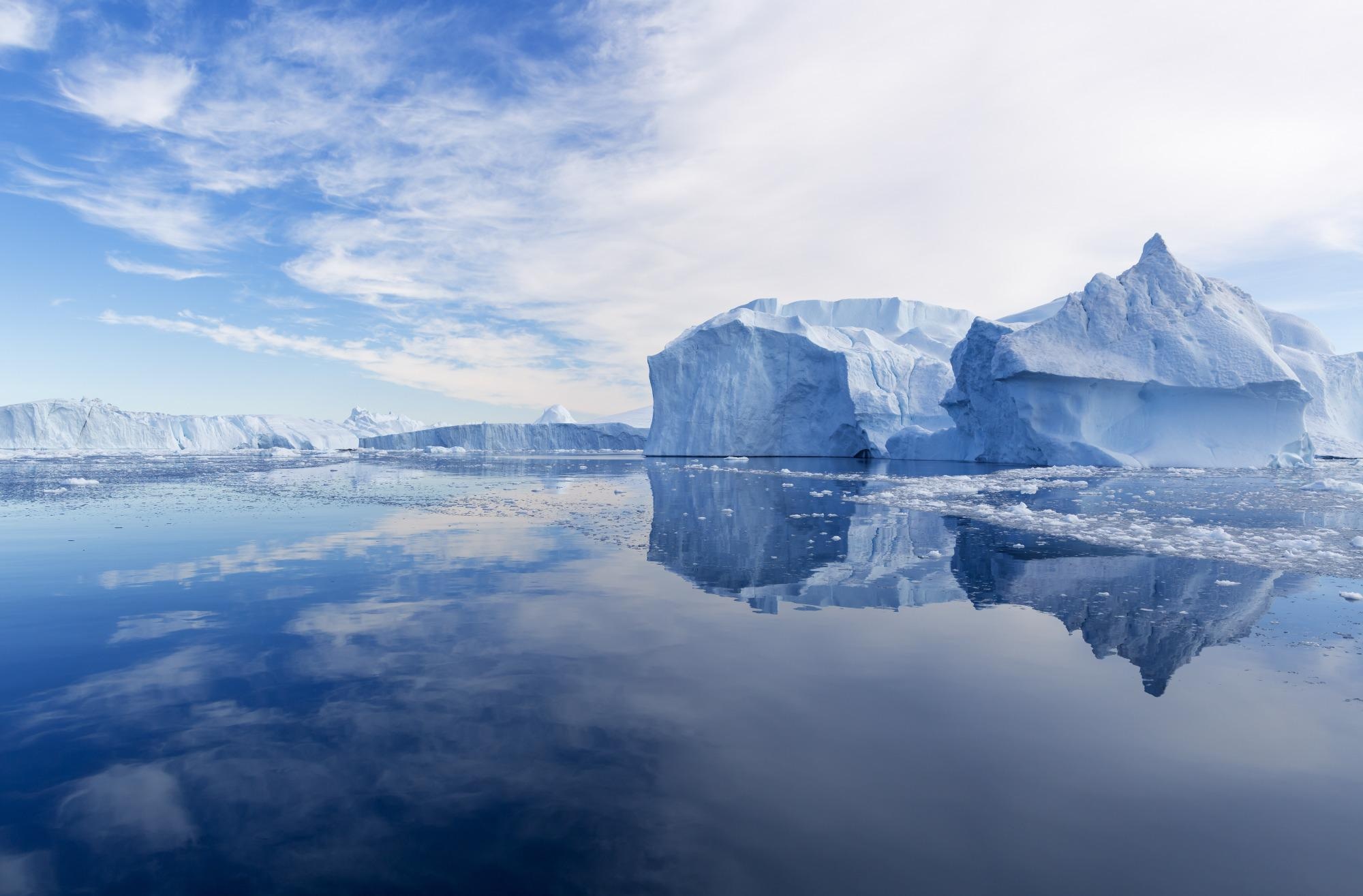
Image Credit: Shutterstock/ Denis Burdin
By examining a rock archive dating back 1.6 million years, researchers have found that melting icebergs in the Antarctic could have triggered chain reactions that led to previous ice ages.
An international team of researchers has reported the discovery of a previously unknown mechanism that could plunge Earth into periods of prolonged colder global temperatures in which glacial ice expands across its surface.
The team believes that these periods, more commonly referred to as ‘ice ages’, could be triggered, in part, by a chain reaction that begins with the shifting huge volumes of freshwater away from the Southern Ocean and into the Atlantic Ocean caused by the melting Antarctic icebergs.
This results in an increase in the salinity of the Southern Ocean and the reverse in the North Atlantic. As a result, large-scale ocean circulation patterns are altered dramatically and oceans begin to ‘pull’ carbon dioxide out of the atmosphere. The net result of this process is the pushing of Earth into ice-age conditions.
The finding solves a long-standing mystery regarding how the cycles of the Sun alone could trigger ice-ages.
Our results provide the missing link into how Antarctica and the Southern Ocean responded to the natural rhythms of the climate system associated with our orbit around the sun.
Professor Ian Hall, The School of Earth and Environmental Sciences
Hall is the lead co-author of a paper documenting the team’s research published in the journal Nature.
Reconstructing the Past with Ice-Rafted Debris
In order to construct their study, the global team used multiple methods to reconstruct the climatic conditions of the Earth’s distant past.
This included finding and identifying tiny fragments of Antarctic rock deposited in oceans by water from melting icebergs. Due to the mechanism by which they are deposited, these rock fragments are given the name ‘Ice-Rafted Debris.’
The samples were collected from sediments by the International Ocean Discovery Program (IODP) Expedition 36 on which hall was the co-lead scientist.
The team used observations of changes in the chemistry of tiny deep-sea fossils — foraminifer — to find that depositing of Ice-Rafted Debris consistently coincided with changes in deep ocean circulation.
The rock fragments in question represent a ‘record’ of over 1.6 million years of geological and climate data. This means they form one of the longest-spanning and most detailed archives of Antarctic icebergs ever discovered.
In addition to this line of investigation, the team also used sophisticated climate model simulations discovering that the Antarctic icebergs could move a huge volume of freshwater.
What Does This Mean for Global Warming?
During the course of the past 3 million years, the Earth has regularly been plunged into ice-age conditions, before ‘bouncing back’ to a warmer climate — or interglacial period such as the one it currently exists in. Many climate change deniers have pointed to this cycle in an attempt to diminish the effects that CO2 emissions originating from human activity — or anthropogenic — have on the Earth’s global temperature.
The team involved in this research is keen to point out that the mechanism they have identified will not offset the warming caused by such emissions. In fact, they say that anthropogenic CO2 emissions have disrupted the natural rhythm of ice age cycles.
This is because the Southern Ocean will likely become too warm for Antarctic icebergs to travel far enough to kick start the changes in ocean circulation required to begin the chain reaction that in the past, has led to an ice age.
Hall points out that the team’s study could actually point to data necessary to model the planet’s climate in the future. “As we observe an increase in the mass loss from the Antarctic continent and iceberg activity in the Southern Ocean, resulting from warming associated with current human greenhouse-gas emissions,” the researcher points out. “Our study emphasizes the importance of understanding iceberg trajectories and melt patterns in developing the most robust predictions of their future impact on ocean circulation and climate.”
We were astonished to find that this lead-lag relationship was present during the onset of every ice age for the last 1.6 million years. Such a leading role for the Southern Ocean and Antarctica in global climate has been speculated but seeing it so clearly in geological evidence was very exciting.
Aidan Starr, Lead Author, School of Earth and Environmental Sciences, Cardiff University
References
¹ Starr. A., Hall. I. R., Barker. S., et al, [2021], ‘Antarctic icebergs reorganize ocean circulation during Pleistocene glacials,’ Nature, [ DOI: 10.1038/s41586–020–03094–7].
Disclaimer: The views expressed here are those of the author expressed in their private capacity and do not necessarily represent the views of AZoM.com Limited T/A AZoNetwork the owner and operator of this website. This disclaimer forms part of the Terms and conditions of use of this website.